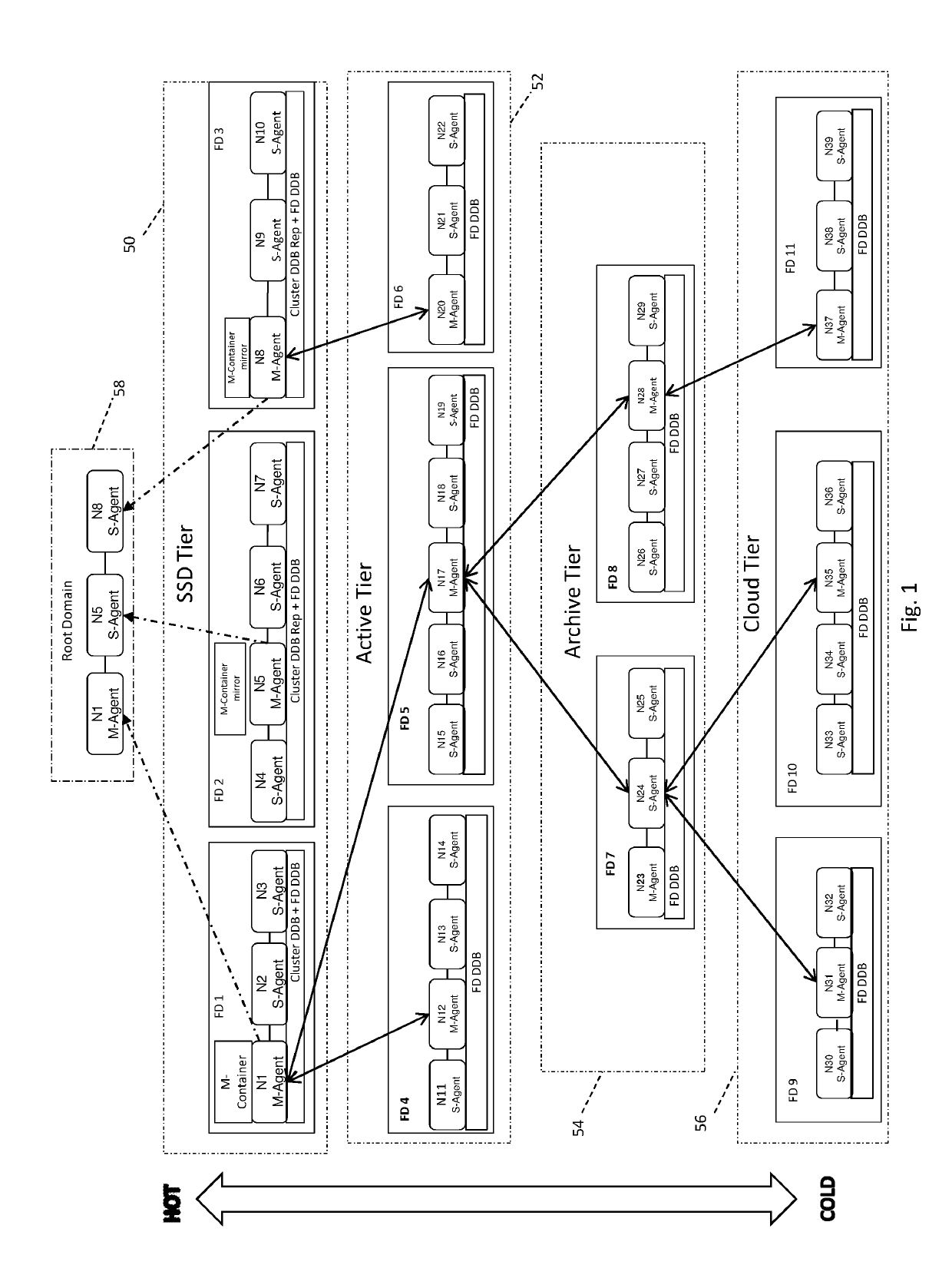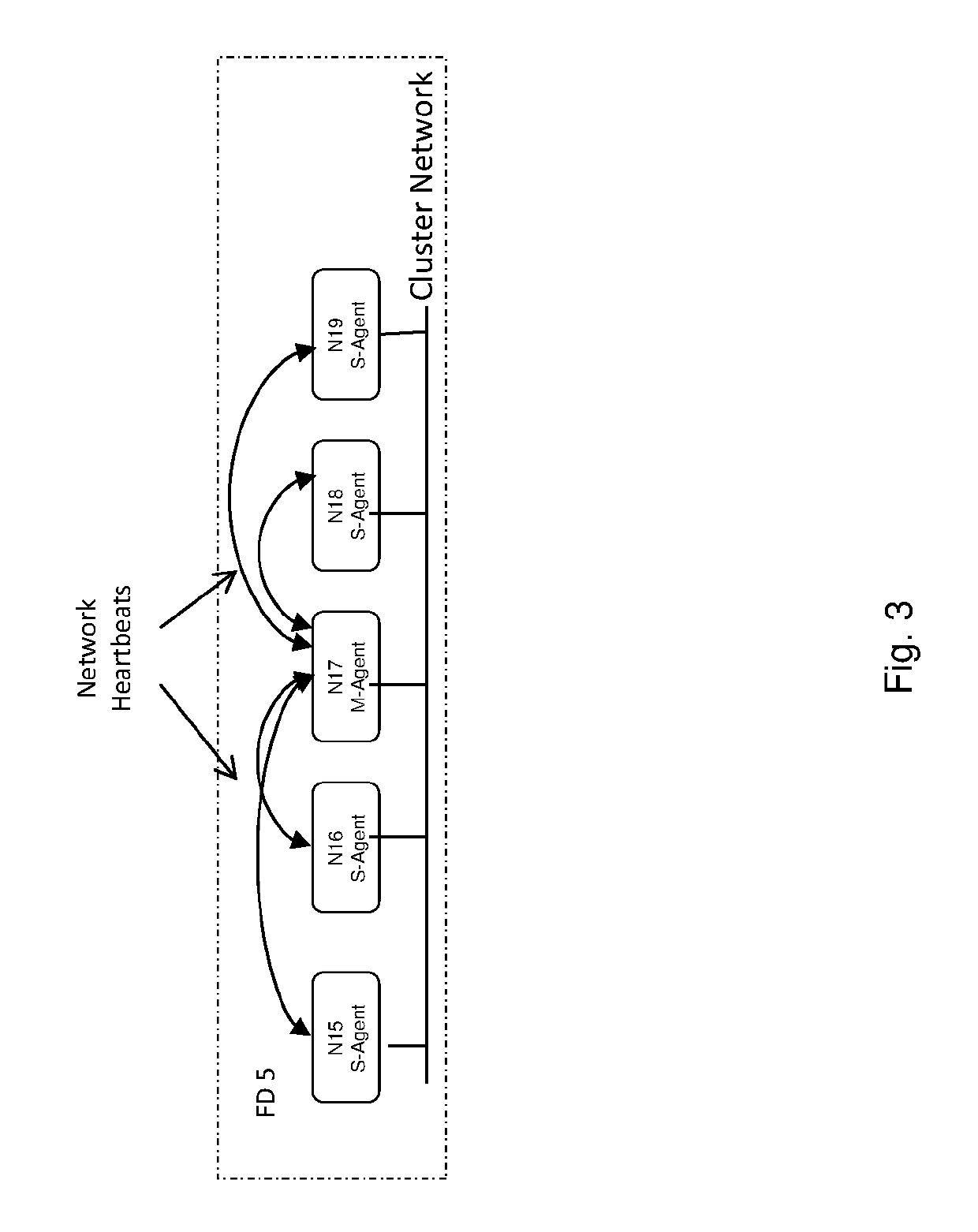Data Protection Cluster System Supporting Multiple Data Tiers
a data protection and cluster technology, applied in the field of cluster data systems, can solve the problems of network partitioning, difficulty in expanding the number of nodes in such systems, and more overhead in maintaining
- Summary
- Abstract
- Description
- Claims
- Application Information
AI Technical Summary
Benefits of technology
Problems solved by technology
Method used
Image
Examples
Embodiment Construction
[0012]The invention is particularly well adapted to very large scale-out cluster data storage systems requiring expandability, high data availability and high data protection, and will be described in that environment. However, as will become evident, this is illustrative of only one utility of the invention and the invention has applicability to other types of data systems.
[0013]Briefly summarized and as will be described in more detail, the invention affords a new multi-tier data cluster architecture having hierarchical membership of heterogeneous cluster nodes at multiple cluster levels corresponding to the multiple data tiers having multiple failover domains comprising groups or clusters of nodes (as will be described more fully below) at each data tier. Each group of nodes comprising a failover domain can serve a specific data tier. The multi-tier cluster supports a global namespace across the entire cluster, including across data tiers and node groups, and this namespace may b...
PUM
 Login to View More
Login to View More Abstract
Description
Claims
Application Information
 Login to View More
Login to View More - R&D
- Intellectual Property
- Life Sciences
- Materials
- Tech Scout
- Unparalleled Data Quality
- Higher Quality Content
- 60% Fewer Hallucinations
Browse by: Latest US Patents, China's latest patents, Technical Efficacy Thesaurus, Application Domain, Technology Topic, Popular Technical Reports.
© 2025 PatSnap. All rights reserved.Legal|Privacy policy|Modern Slavery Act Transparency Statement|Sitemap|About US| Contact US: help@patsnap.com



